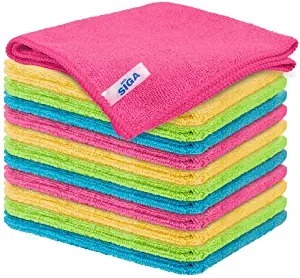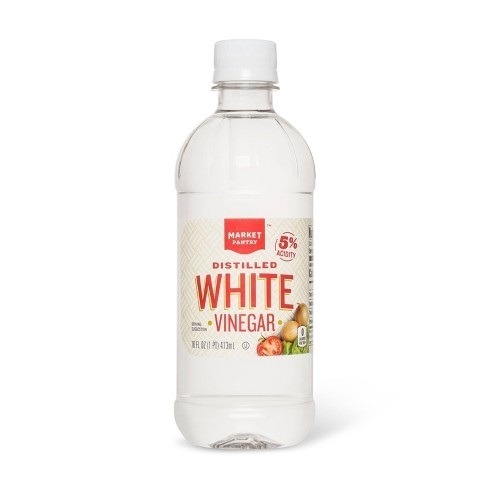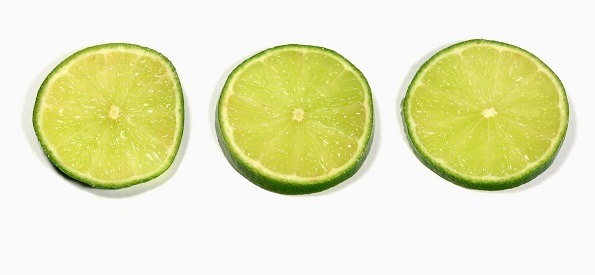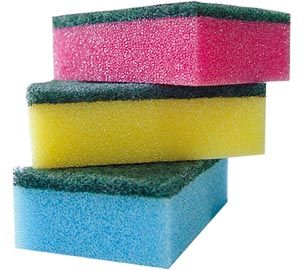A kitchen is a serene place for the preparation of meals. The last thing you’d want is to have a bad odor filling your kitchen and its surroundings.
Kitchen cloths and sponges are the most commonly used cleaning materials in every kitchen.
As cleaning materials, these items pick up dirt, bacteria, and other debris from the cleaned materials and surfaces.
Most times, especially due to lack of proper maintenance and regular cleaning of the kitchen cloths and sponges, they tend to have bad odors.
Kitchen Cloths & Sponges and Bacteria
Kitchen cloths and sponges supply the ideal surroundings for growth of bacteria, these conditions are: moist, warm, and plenty of food.
Sponges can have all kinds of bacteria, which include listeria, staphylococcus, campylobacter, E. coli, and salmonella. All these can bring about infections to the skin and intestines.
You can eliminate the disease-causing germs by rinsing properly with a sponge, hot water and soap. It is important that you lower contamination risk; you need to sanitize the sponge.
Kitchen cloths are home to dangerous germs and microbes if you don’t clean them frequently. If you smell dampness and odor, it is a sure sign that there are lots of germs in the kitchen cloth.
Make sure you wash it right away to get rid of the nasty smell. How do you clean those smelly kitchen clothes and sponges?
It is important to take into consideration the wash cycle. Keep in mind that moist, damp surroundings make bacteria live and multiply. It is best if you use hot cycle of the dishwasher to wash the kitchen cloths.
Also, ensure that you set on a high setting to dry them completely. Why do they smell, and how can we get rid of the smell from either?
Restoring your Kitchen Cloths
Why do kitchen cloths smell?
Kitchen cloths perform a variety of roles that expose them to the growth of bacteria. The buildup of bacteria is what causes the unpleasant smell.
How does the cloth become the breeding ground for bacteria?

The kitchen cloth wipes off food substances from the kitchen counter and other surfaces. These food particles get stuck in between the cloth and begin the rotting process.
This environment is conducive to the growth of bacteria and hence the bad odor.
Wiping of fluids and grease can also promote bacterial growth.
A wet environment created by regular drying of your hands is another key factor in bacteria growth.
Lack of adequate drying of your kitchen cloth after washing also creates a suitable breeding ground for bacteria.
Failure to frequently clean the kitchen cloth causes the accumulation of dirt, germs, and bacteria.
How do you remove the smell from your dish cloths?
Try some of the simple tips below to ensure you never face the embarrassment of a stinky dish cloth.
Day to day steps to control kitchen cloth odors
- Due to the nature of the work done by kitchen cloths, it is advisable to use microfiber cloths or thin cloths that do not absorb moisture for a long time.
- Immediately after use, wash the kitchen cloth in hot soapy water. Rinse well and wring out the excess water before air-drying it.
- Do not hang your cloth next to the sink area.
- Change your kitchen cloth daily even after all the cleaning during the day.
- For cloths soaked with meat juices or dairy products, change to a new cloth.
For less strong odors

- Fill a pot with water and bring it to a boil.
- Add one cup of white vinegar and lemon, then dip in your kitchen cloth.
- Boil the clothes for a quarter an hour in the solution to kill germs and bacteria.
- Remove the pot from the heat source and allow it to cool to room temperature.
- After it’s cooled, take the kitchen cloths out of the pot and hang them out in the sun.
Thorough cleaning of kitchen rags with strong odors
- Proper washing of the kitchen cloths gets rid of all odors.
- Wash the kitchen cloths separate from other laundry to avoid contamination.
- Add water to the washing machine and a regular laundry detergent. You can also hand wash with a good detergent.
- Adjust the machine to the hottest setting and launder the cloths like ordinary laundry for a few minutes.
- In the rinse cycle, add vinegar and lemon in the rinse water to deodorize your cloth.
- Place the kitchen cloth in the dryer for about an hour to ensure it is completely dry.
Maintenance tips for kitchen cloths
- Do not hang the kitchen cloth next to the sink area.
- For foods with strong odors, use a paper towel to wipe as an alternative to prevent your kitchen cloth from absorbing the smells.
- Regular washing of the kitchen cloth.
- Do not store or use before it is dry. Sun drying your cloth also ensures it dries and airs well.
- Always have a substitute cloth to use in between the washing and drying processes.
Restoration of Kitchen Sponges
What causes odor in sponges?
Just like kitchen cloths, sponge odor comes from the growth of bacteria. Cleaning dirty dishes and countertops will have some food particles stick on the sponge.
The decomposition of these particles is what yields the bacteria.
How to get rid of sponge smells
Sun rays
Hang your sponge out in the sun after giving it a good wash. The sun UV rays are a strong disinfectant.
Exposing your sponge to the sun kills bacteria and germs attached to the sponge. As a result, the rays get rid of the odor from the sponge.
Depending on the weather and season, the time a sponge takes to dry varies. On a hot day or during summer, the sponge can take about a day to dry.
On cooler days, leave the sponge for a few days, and on cold days it can take up to a week to dry.
Due to the long drying period, you can have two sponges to alternate. When the sponge in use starts to smell, get the one outside.
Microwave
The microwave kills 99% of the germs because of the high temperatures. With your microwave on a high setting, place the wet sponge inside and heat it for two minutes approximately.
Do not put a dry sponge in the microwave as it will burn. Also, ensure there are no metallic objects stuck on the sponge, no matter how small it is.
The microwave destroys all bacteria that cause foul odor hence restoring the smell of your sponge. After the two minutes, let the sponge cool before taking it out to avoid getting burnt.
Dishwasher
The dishwasher is another alternative to eliminate bad odor from your sponge. Place the sponge in the dishwasher.
Use hot water and let the sponge clean like ordinary dishes.
Consecutively, rinse and dry it in the dishwasher. The high temperature will destroy the bacteria causing the odor.
Make sure the water is adequately hot as well. A water temperature of 140°F or higher can eliminate the germs that lurk in the sponge.
You should keep two sponges and spin them in and out of your dishwasher at different times.
This way, you will always have a hygienic sponge readily available for use while the other one is undergoing washing and drying.
Disinfecting

Soak the sponge in concentrated white vinegar or lemon juice to kill bacteria. The process is not effective in destroying bacteria, but the two components are good for deodorizing.
The sponge absorbs the odor from vinegar or lemon juice, replacing the bad smell.
Another option is to soak the sponge in a bleach solution and water to disinfect and kill bacteria and the odor.
Cheap trick
Viruses and bacteria require moist, warm surroundings to colonize the sponge. For this reason, leaving a sponge in your sink will cause odors and bacteria to grow.
It would help if you allowed it to dry out between uses to reduce the unwanted organisms.
It is best if you store the kitchen sponge in a small open basket hung over your sink or allow air to get onto all the sponge surfaces.
You can do this by using an office binder clip to pinch one short end of your sponge and stand the clip on its metal “handles.” This will help in keeping the kitchen sponge out of the water and let it dry fast.
Moist climates make it hard to dry kitchen sponges between uses. In moist conditions, it is best to supplement between-use drying methods with microwave or dishwasher sessions.
It would help if you replaced sponges frequently, at the first sign when you realise that cannot totally remove the smell or when the wear and tear become visible.
Maintenance tips for your sponges
- Do not hang your sponge next to your sink. The sink has a warm wet environment that is conducive to the growth of bacteria and viruses.
- Store your kitchen cloth in an open dish rack suspended over the sink.
- Allow the sponge to dry outside in shifts to prevent growth of bacteria and destroy the existing micro-organisms.
- Always have a substitute sponge in between the cleaning and drying period.
- Replace the sponge if it is not in good condition or if the odor persists.
Things you should avoid doing:

- Wipe meat juices – this might increase the chances of the spread of hazardous bacteria. Rather, use a disposable disinfectant wipe or paper towel for cleaning up spills.
- Use on countertops – use of a kitchen sponge for wiping countertops will increase the chance of the spread of huge amounts of microbes on a countertops surface. Minimize the possibility of contamination by using disposable disinfectant wipes.

